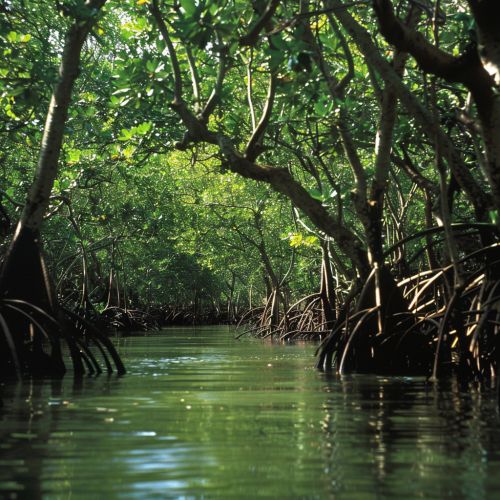Mangrove
Overview
Mangroves are a group of trees and shrubs that live in the coastal intertidal zone. There are about 80 different species of mangrove trees. All of these trees grow in areas with low-oxygen soil, where slow-moving waters allow fine sediments to accumulate. Mangrove forests only grow at tropical and subtropical latitudes near the equator because they cannot withstand freezing temperatures.


Biology and Ecology
Mangroves have unique adaptations to survive in harsh coastal conditions. They are characterized by their tolerance to the high salinity of the brackish waters in which they reside. Many mangrove species possess specialized root structures, known as pneumatophores, that protrude above the water or soil surface and facilitate oxygen uptake.
Mangroves are a key part of coastal and estuarine ecosystems, providing habitat for a diverse array of organisms. They serve as nurseries for many species of fish and invertebrates, including commercially important shrimp, crab, and lobster. Mangroves also provide nesting and roosting sites for a variety of bird species.
Distribution and Diversity
Mangroves are found in 123 nations and territories in the tropics and subtropics. The nations with the largest total mangrove area are Indonesia, Brazil, and Australia. The diversity of mangrove species is highest in Southeast Asia, particularly in Indonesia and Malaysia.
Importance and Threats
Mangroves provide a range of ecosystem services, including coastal protection, carbon sequestration, and provision of food and livelihoods for local communities. However, mangroves worldwide are under threat from a variety of factors, including deforestation, climate change, and pollution.


Conservation and Restoration
Efforts are being made globally to conserve and restore mangrove forests. These efforts often involve community-based management and the use of ecological mangrove restoration techniques. Despite these efforts, mangrove loss continues at an alarming rate, and more needs to be done to protect these vital ecosystems.
